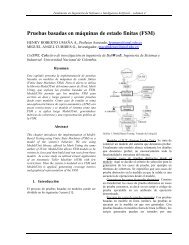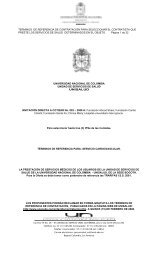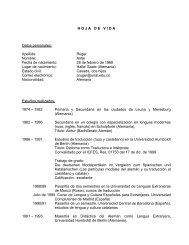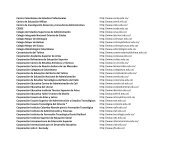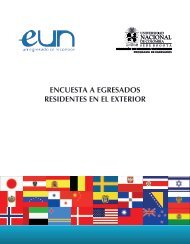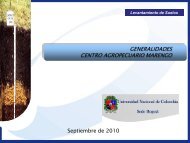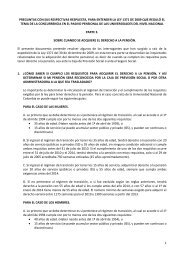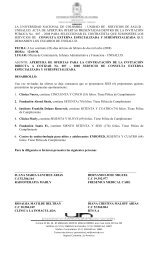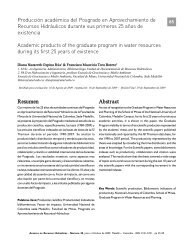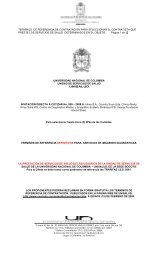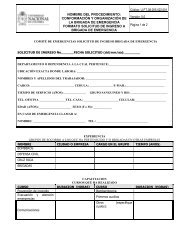ISO 11799
ISO 11799
ISO 11799
You also want an ePaper? Increase the reach of your titles
YUMPU automatically turns print PDFs into web optimized ePapers that Google loves.
<strong>ISO</strong> <strong>11799</strong>:2003(E)<br />
materials last longer at lower temperatures and at lower relative humidity. As a guidance, the data in informative Annex B<br />
may be used.<br />
Sharp fluctuations in temperature and relative humidity put stress on archive and library materials and should<br />
therefore be avoided. The aim shall be to achieve as stable a temperature and relative humidity as is<br />
practicable.<br />
There shall be monitoring devices for temperature and humidity, preferably recording instruments that register<br />
conditions at different times and in different seasons. Sensors should be sited to provide readings that<br />
represent the storage areas, but account should also be taken of any extreme or abnormal conditions which<br />
may be present, e.g. near outside walls or close to a source of heating or ventilation.<br />
The monitoring instruments shall be calibrated and recalibrated according to the manufacturer's instruction.<br />
When material is taken out of cold storage, it shall be acclimatized. In order to avoid expansion and<br />
contraction, measures shall be taken to ensure that the material absorbs or gives off as little moisture as<br />
needed to equilibrate with its new climatic conditions. Special attention shall be paid to the danger of<br />
approaching the dew point at the surface of an item, if it is moved to a warmer room or inside an airtight<br />
container (glass, plastics) when such items are relocated from cold storage.<br />
When moving an item from a cool to a warm room, satisfactory acclimatization can be achieved by placing it in<br />
an airtight enclosure with a minimum air volume until the temperature has risen to the ambient temperature.<br />
When moving an item in an airtight enclosure back to cold storage, the enclosure should not be removed for a<br />
while, until the item has acclimatized.<br />
6.8 Furniture and equipment<br />
No furniture or equipment other than that used for storage and handling of documents shall be in a repository.<br />
Furniture or equipment used shall have no sharp edges or corners, nor protrusions on the sides adjacent to<br />
the stored items and shall not damage documents upon contact.<br />
The materials used for furniture or equipment shall not be combustible nor emit, attract or retain dust. Nor<br />
shall they be liable, through decomposition in the event of fire or for other reasons, e.g. natural ageing, to emit<br />
substances harmful to the materials stored, e.g. acidic gases. The choice of material shall minimize, in the<br />
case of fire, the emission of harmful substances, smoke and soot.<br />
For the correct functioning of the principles of climatic inertia (see 5.2.), no furniture nor any other item shall<br />
be placed in close proximity to an outside wall. There should be a distance of at least 200 mm between items<br />
and wall.<br />
The load-bearing capacity of shelving shall be sufficient to carry their load (see 5.3). The shelves should be<br />
large enough to ensure that documents will not protrude beyond the edges.<br />
Shelves for normal storage, e.g. of books, shall be fitted in such a way that the material will stand upright<br />
when required. The items shall be able to be stored close together, but not so close that items cannot be<br />
easily removed. Equipment for this purpose shall be easily adjustable. For books and paper documents, the<br />
lateral or vertical pressure on an individual item should not exceed 350 Pa for normal objects and 150 Pa for<br />
electrostatic copies.<br />
NOTE A pressure of 350 Pa roughly corresponds to that received by a book lying horizontally, on which a book of<br />
similar size and 45 mm thick has been placed.<br />
In order to allow easy access for normal and emergency use, and to allow air circulation, ample space should<br />
be left between the shelves (or blocks of shelving) and between shelves (or blocks of shelving) and walls (see<br />
also 6.6). If, for reasons of security, the shelves are subject to limited access, this should be effected by<br />
materials allowing air circulation, such as a grill or a punched plate. In order to protect the materials, facilitate<br />
use, and minimize danger in emergency situations, the height of the shelving should never exceed 215 cm.<br />
Licensed to ING. MECC. - UNIV. TOR VERGATA/FULVIO MERCURI<br />
<strong>ISO</strong> Store order #: 648902/Downloaded: 2005-02-02<br />
Single user licence only, copying and networking prohibited<br />
© <strong>ISO</strong> 2003 — All rights reserved 7



